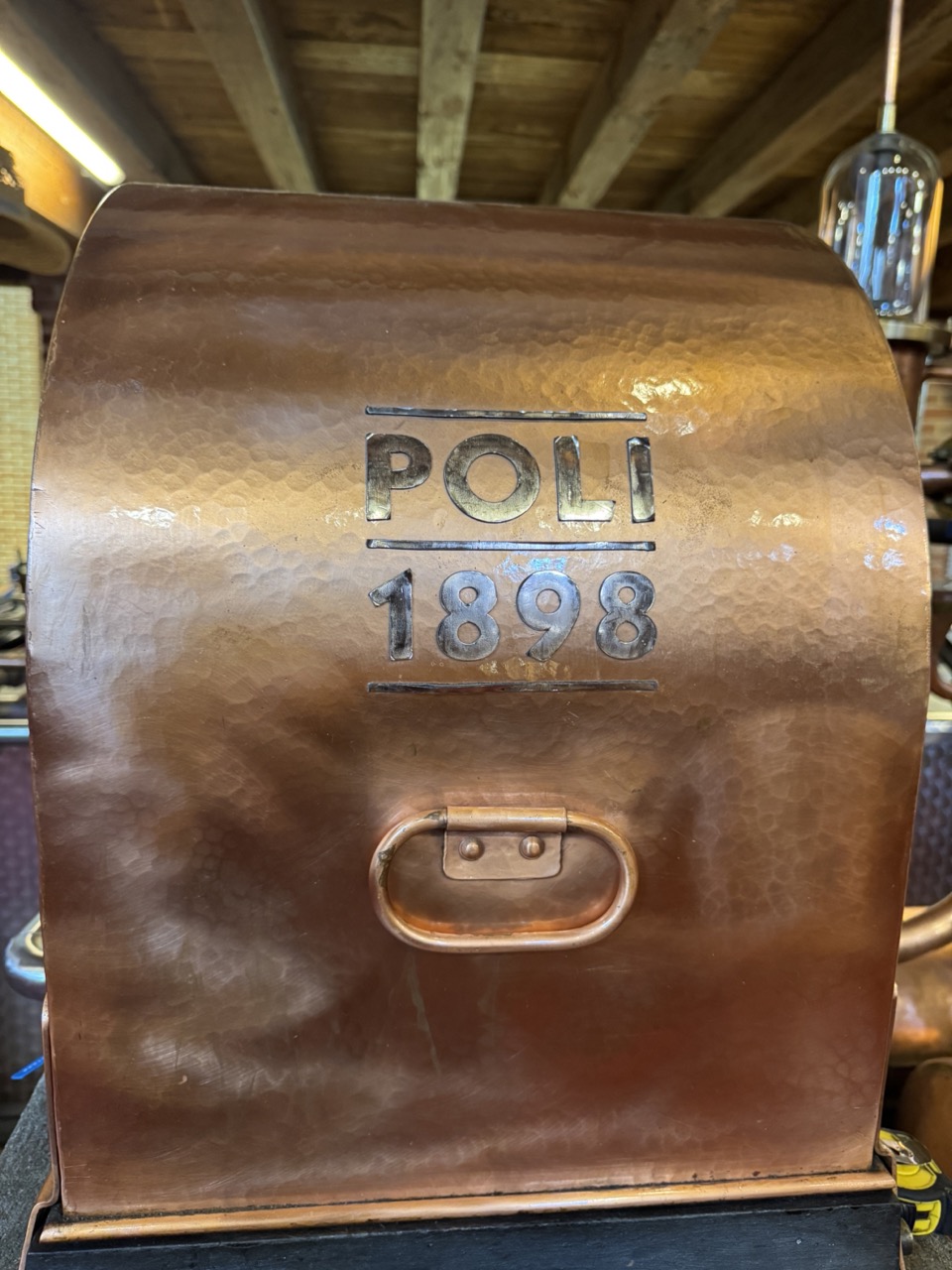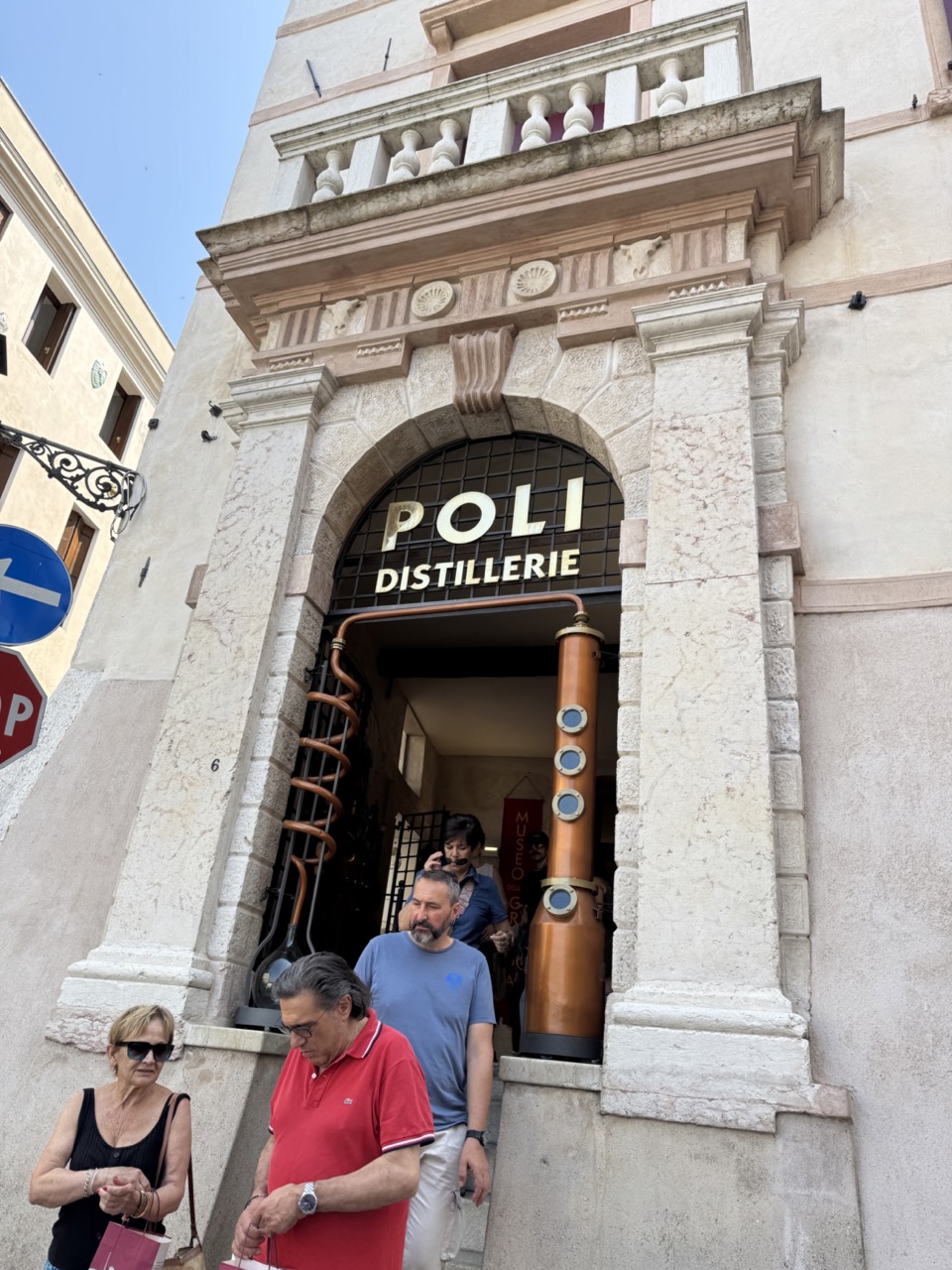The Neutral Zone of Gelato

Giuffrè Forno & Gelato offers over 20 kinds of gelato and granita, along with freshly baked brioches and traditional pastries. The first shop opened in 2018 in the Trastevere neighborhood, and now there are three locations in Rome, including Colli Portuensi and Marconi.
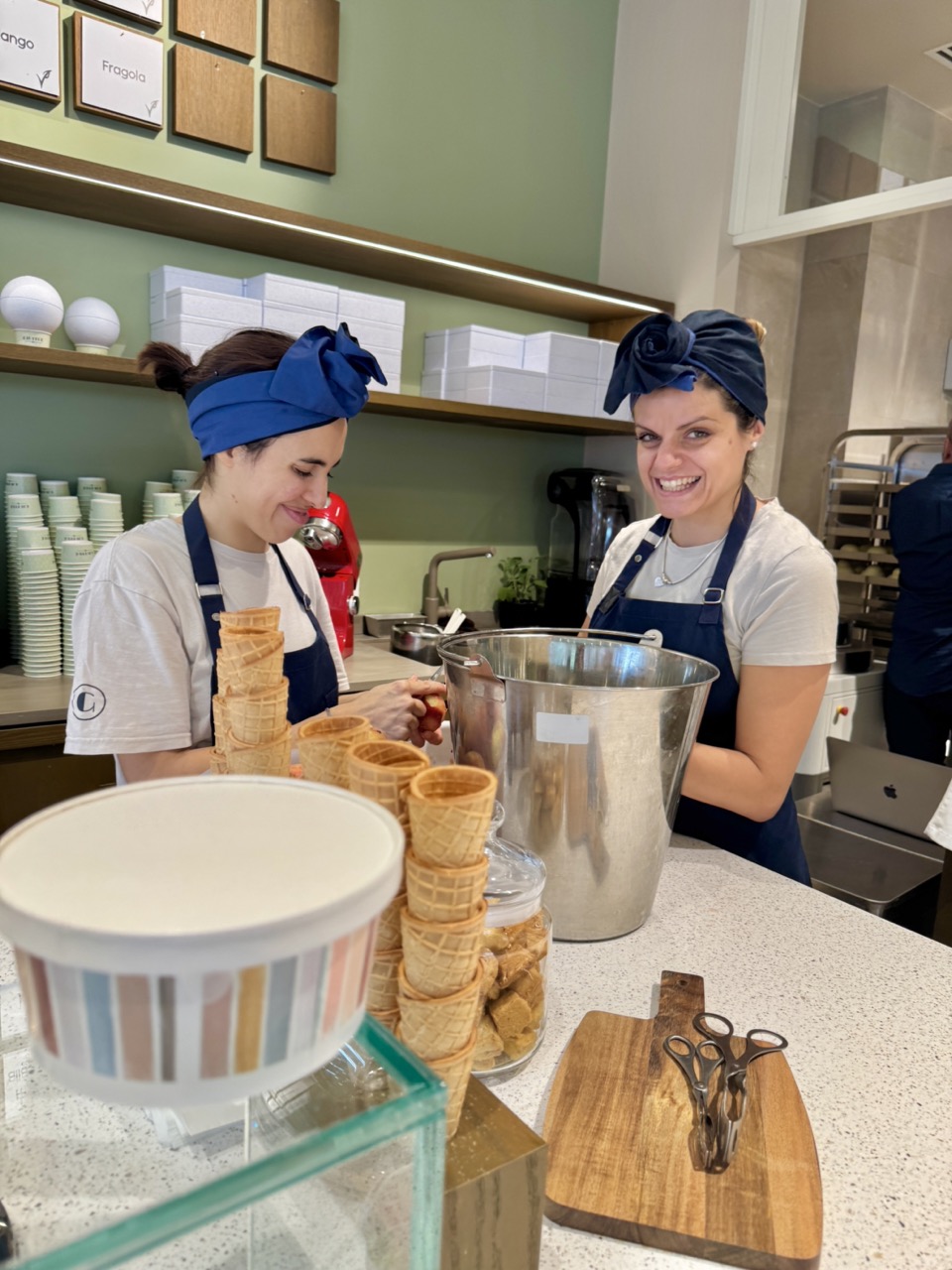
One of the highlights of their gelato is the unique flavor combinations.
“Trasteverino” is a rich cream made with homemade biscotti, salt, and gianduia.
“Porta Portese” blends hazelnuts and chocolate almonds into a smooth and flavorful mix.
“Ricotta Manuè” is made with sheep’s milk ricotta cheese, honey, coffee grounds, and lemon peel, a gentle yet layered flavor.
They also offer seasonal flavors, including one made with Tonda Albicocca, a variety of apricot from Piedmont. Each flavor reflects a strong commitment to quality ingredients.

They also offer a great selection of baked goods. Roman-style cookies called Sampietrini, baba, mini cakes, waffles, and crepes, everything looks tempting.
Whether it's breakfast, a light lunch, or an afternoon snack, this is a place you can enjoy at any time of day, paired with specialty coffee.
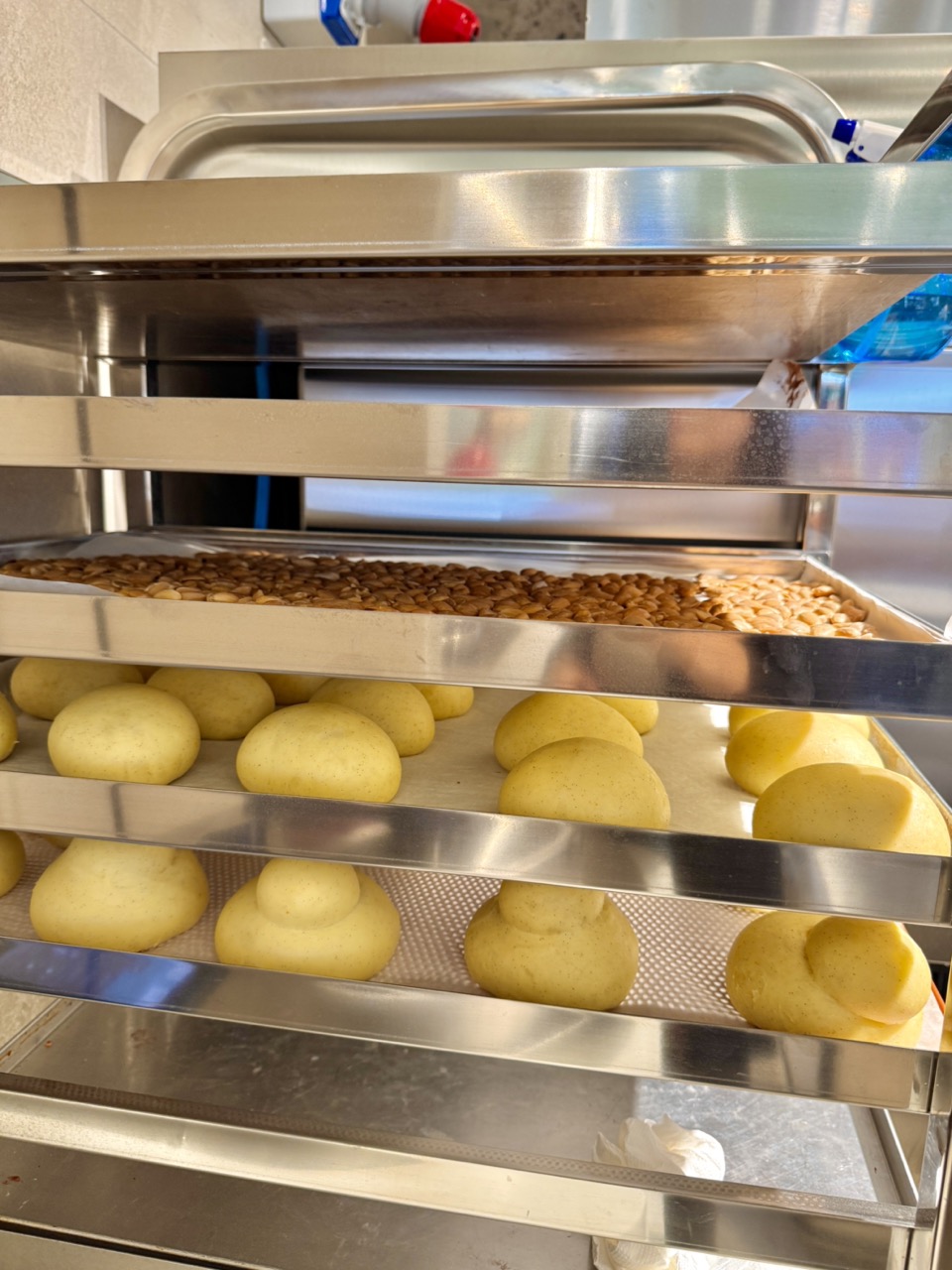
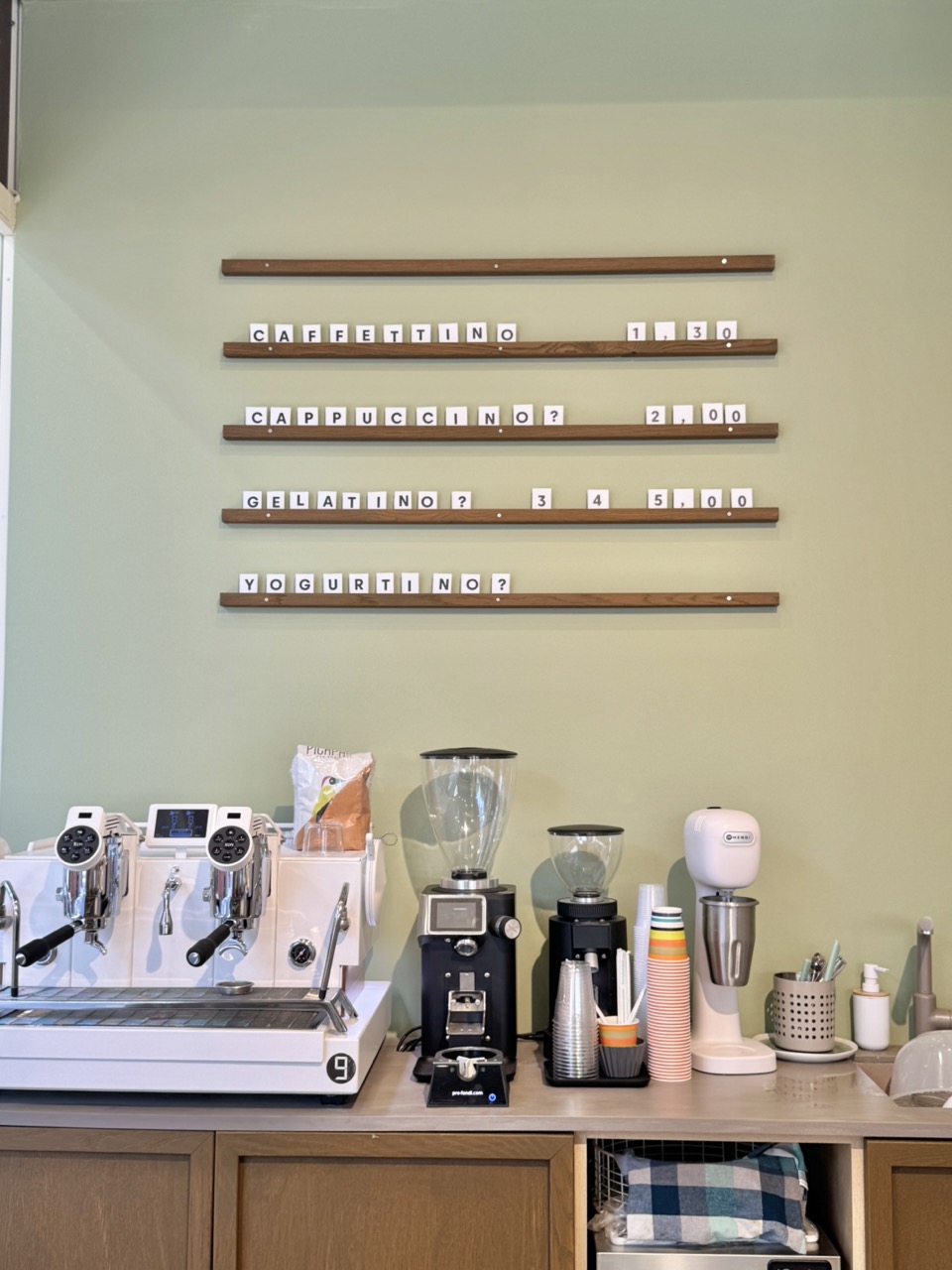
Freshly Finished Gelato Made to Order: The Espresso Method
At Giuffrè, they use what they call the "Espresso Method," where the gelato is finished right in front of you, after you place your order.
They use a round stainless steel container with a lid, known as a carapina. This type of container is often found in authentic gelaterias because it helps maintain the ideal temperature and texture of the gelato.
At Giuffrè, the final step of the gelato-making process happens inside the carapina. This step is called mantecazione, where the gelato is mixed and aerated while being chilled, creating a soft and smooth texture.
Normally, this process is done in advance using a special machine, but at Giuffrè, it's done after the order is placed.
This means you get to enjoy the gelato at its absolute best. Right after it's freshly finished.
Since this approach of "serving it immediately after preparation" is similar to how espresso coffee is made, they refer to it as the Espresso Method.
Because this method allows them to adjust temperature and mixing techniques depending on the ingredients, it brings out the unique qualities of each one whether it's chocolate, fruit, or nuts.
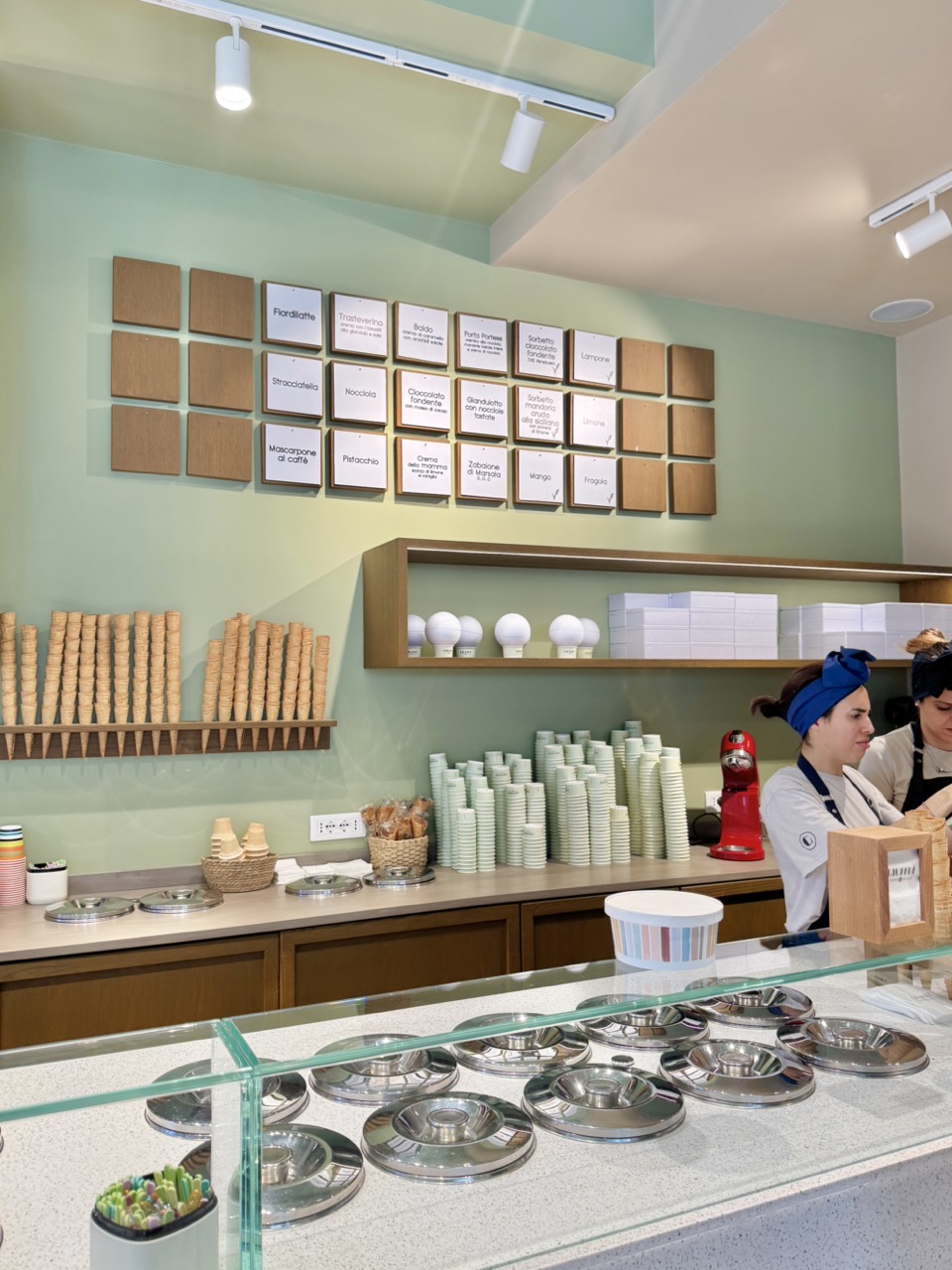

Alessandro Giuffrè
Alessandro Giuffrè, the founder of Giuffrè Forno & Gelato, comes from a family of pastry artisans with Sicilian roots that spans three generations. While valuing tradition, he has always embraced new challenges and this blend of heritage and innovation is reflected in the way he runs his shop.
In his twenties, he launched a piadina shop and a crepe and yogurt specialty store with his family in Cesenatico, a town on the Adriatic coast. Later, he returned to Lazio, where he continued working in the food industry around Lake Bracciano, while seriously refining his skills in pastry and gelato making.
In 2013, he joined a franchise of a prestigious gelato brand, deepening his experience and sensibility through hands-on work. Then in 2018, he launched his own brand, Giuffrè Forno & Gelato, in the Trastevere district of Rome.
He places a strong emphasis on ingredients, sourcing pistachios, nuts, fresh fruit, chocolate, and more from small-scale producers.
His vision is to connect people, communities, and cultures through gelato. This idea runs through every aspect of what he does from sustainable ingredient sourcing and pastry-making to specialty coffee.
He's also dedicated to a project called “La Zona Neutra del Gelato” (The Neutral Zone of Gelato), a space for discussion and learning through gelato. Together with young artisans, he explores the future of gelato culture in a collaborative environment.
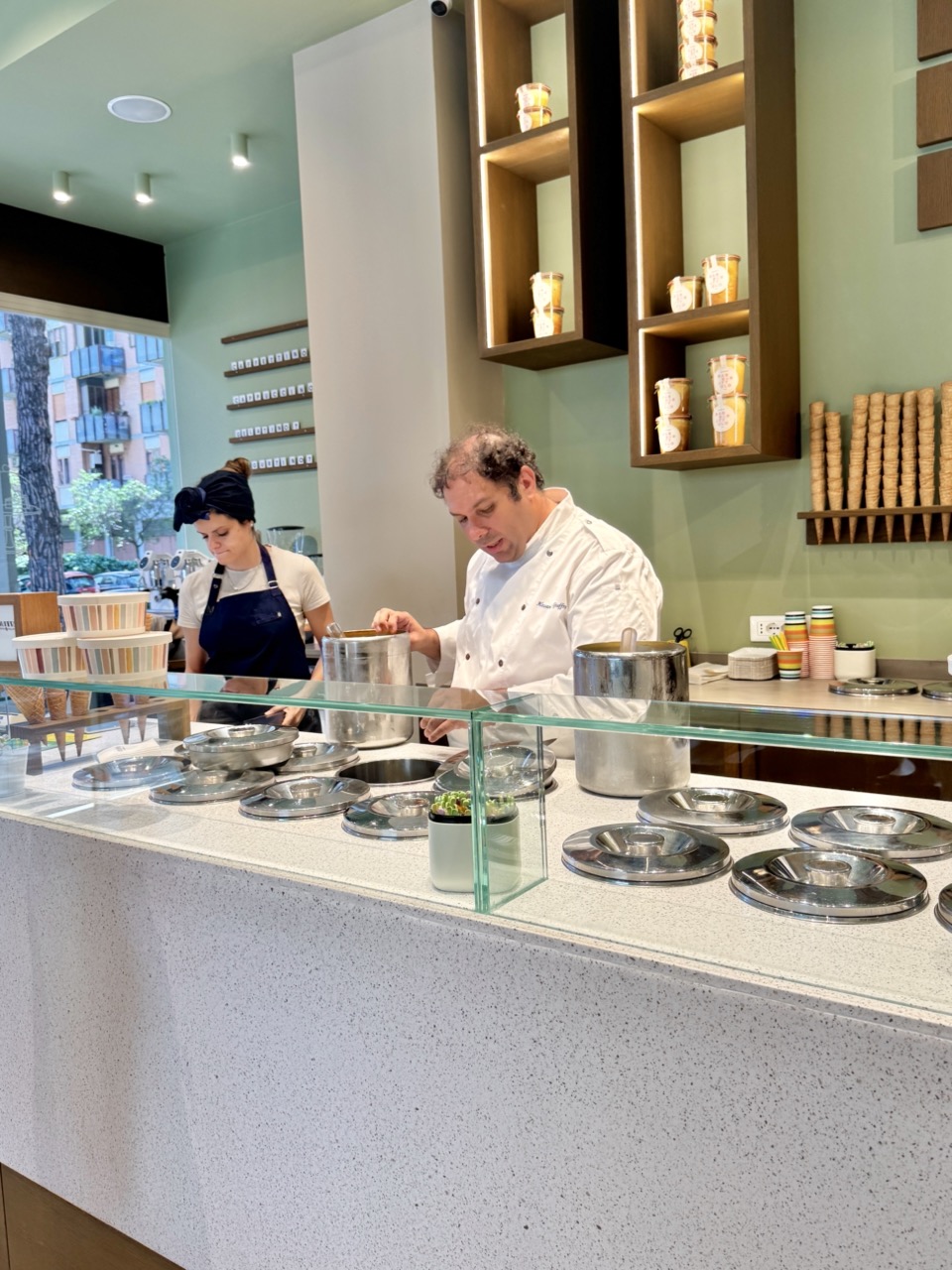
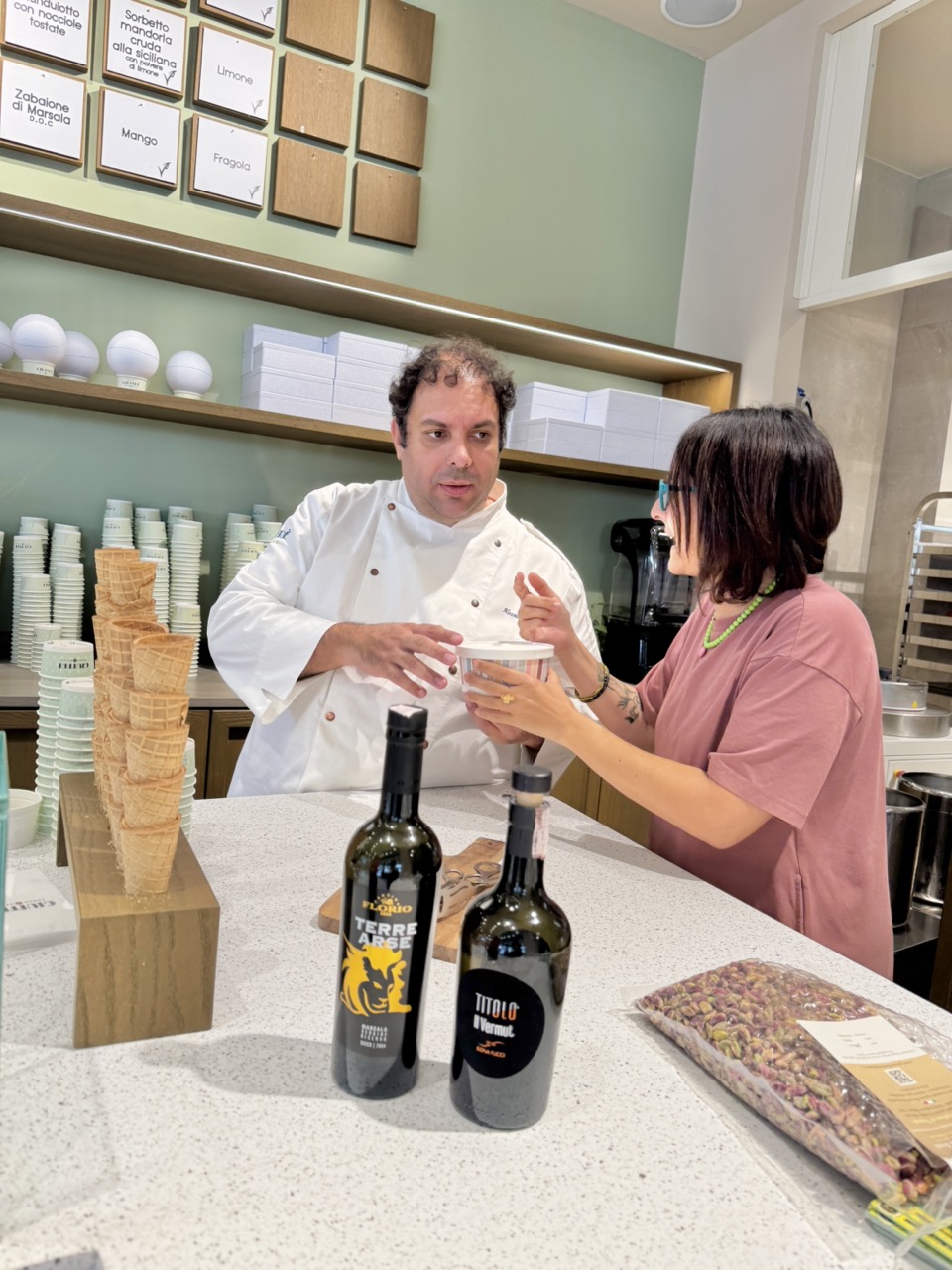
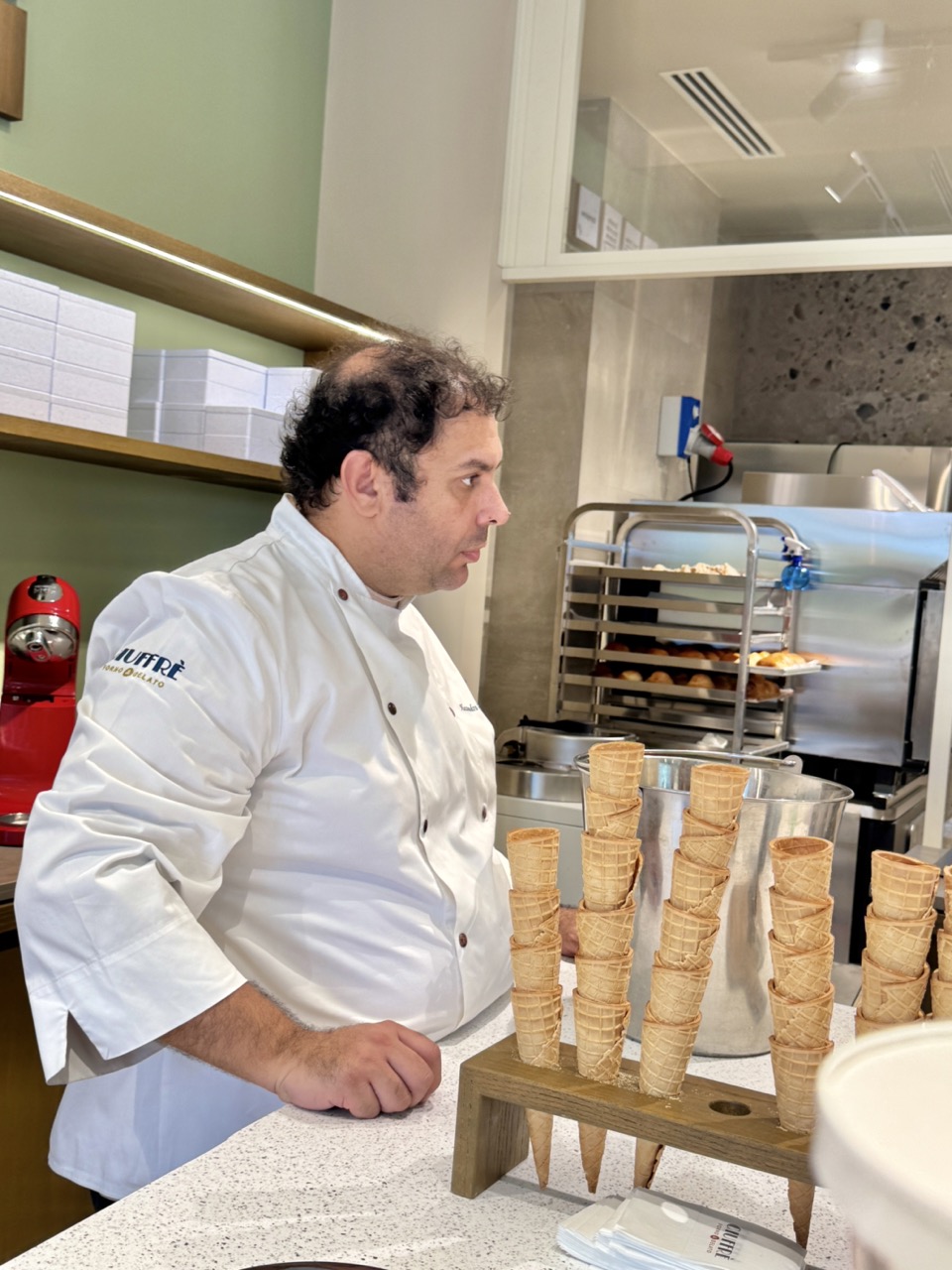
La Zona Neutra del Gelato: Three Artisans Talk About Zabaione
At a recent event held at the new headquarters of Giuffrè Forno & Gelato, gelato artisans from three different regions of Italy came together.
The theme was zabaione, and each artisan introduced their own interpretation highlighting local ingredients and how they used them in gelato.
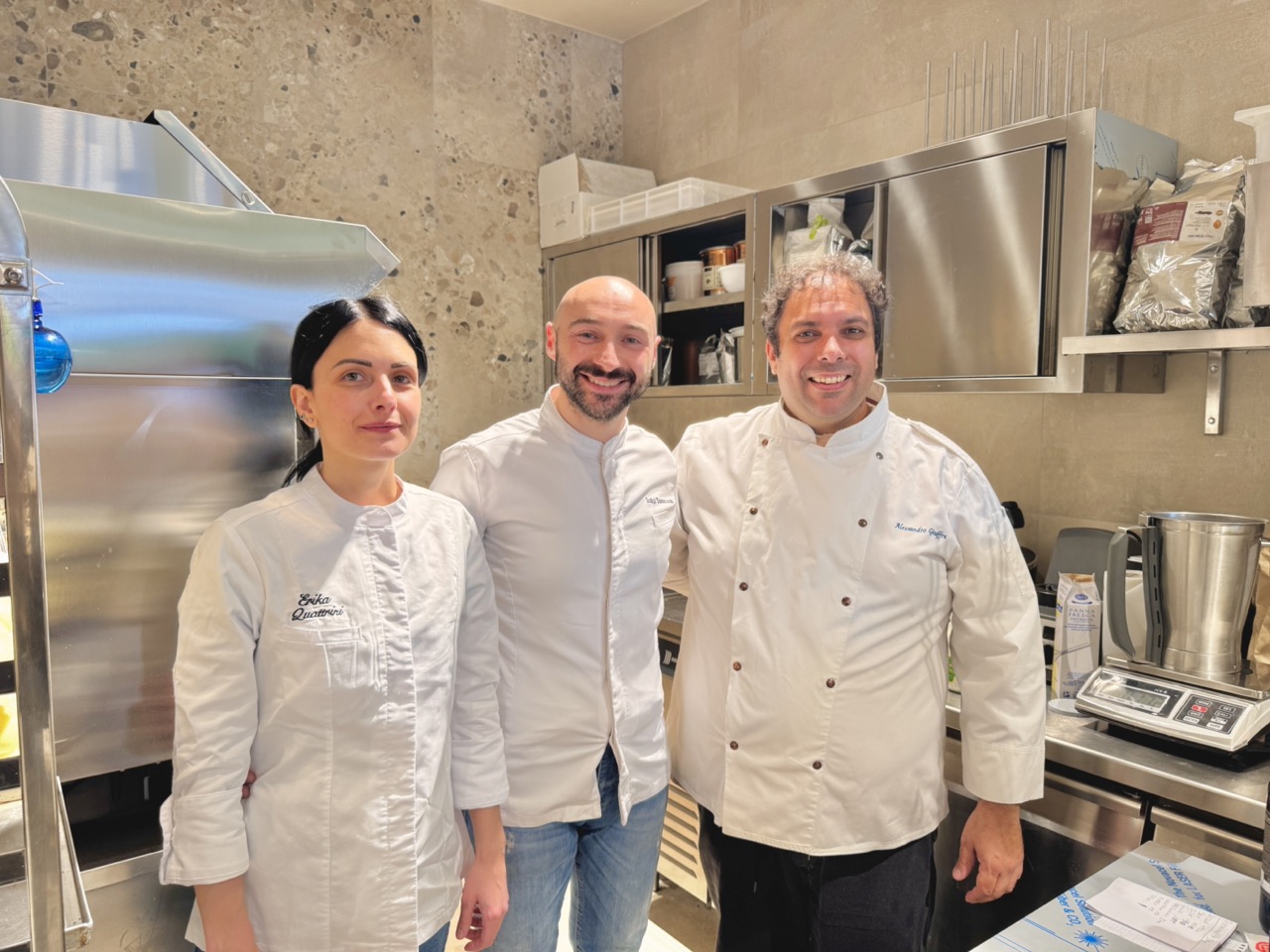
Erika Quattrini, from the Marche region, presented a zabaione made with vino cotto, a cooked wine that has been traditionally made in the town of Loro Piceno. The result was a flavor that felt nostalgic, with depth and richness.
Luigi Buonansegnà, from Basilicata, used a vermouth from well-known wine producer Elena Fucci to create a mature, refined version of zabaione. It had a striking aroma and preserved the character of the drink itself in gelato form. The flavor balance and aromatic profile were carefully crafted, giving the final product an elegant feel.
As the host, Alessandro introduced his own zabaione. Simple, yet aromatic. By minimizing the ingredients and the steps, he brought out a clean but full flavor. The result was a gentle and sophisticated taste.
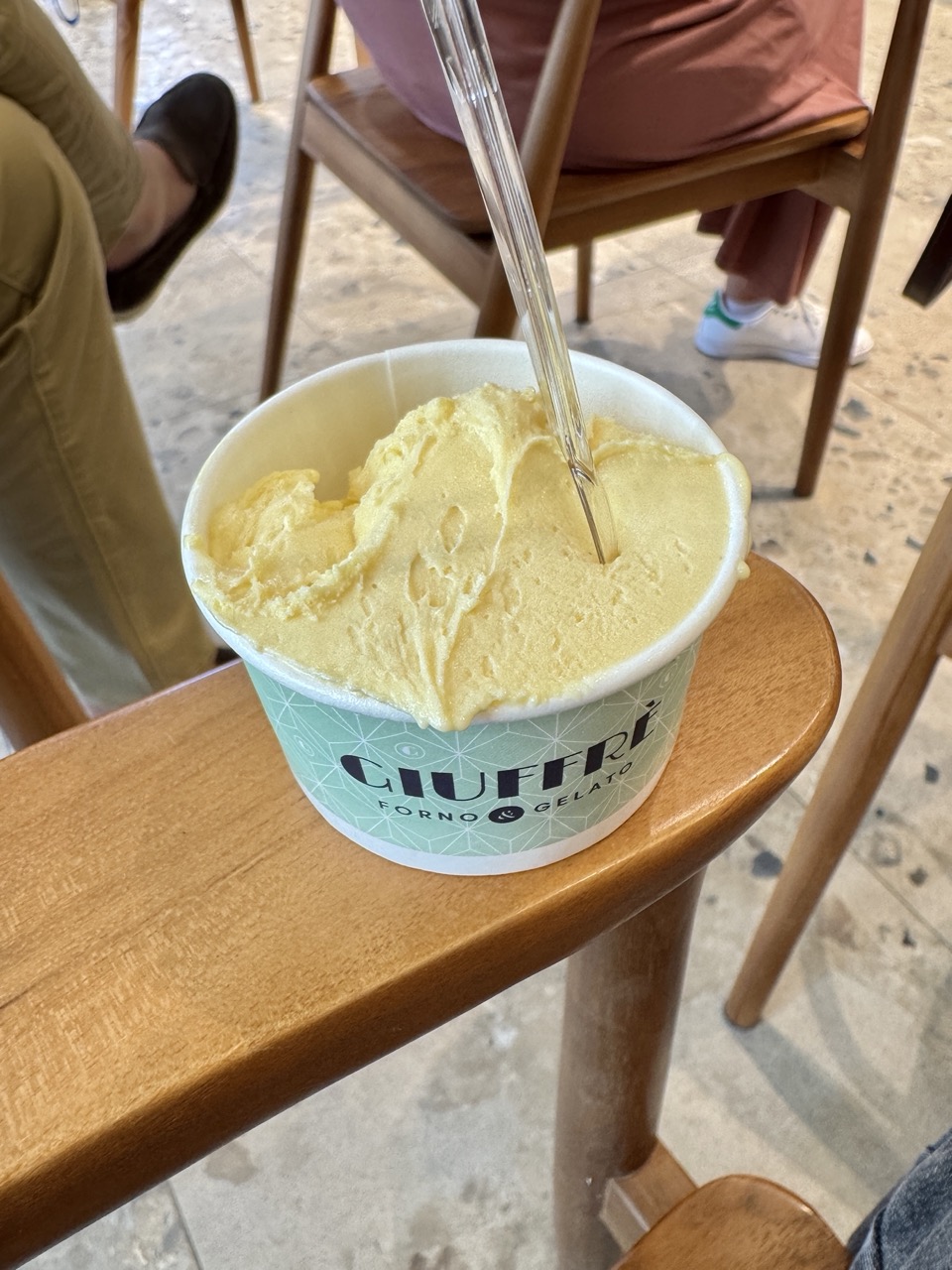
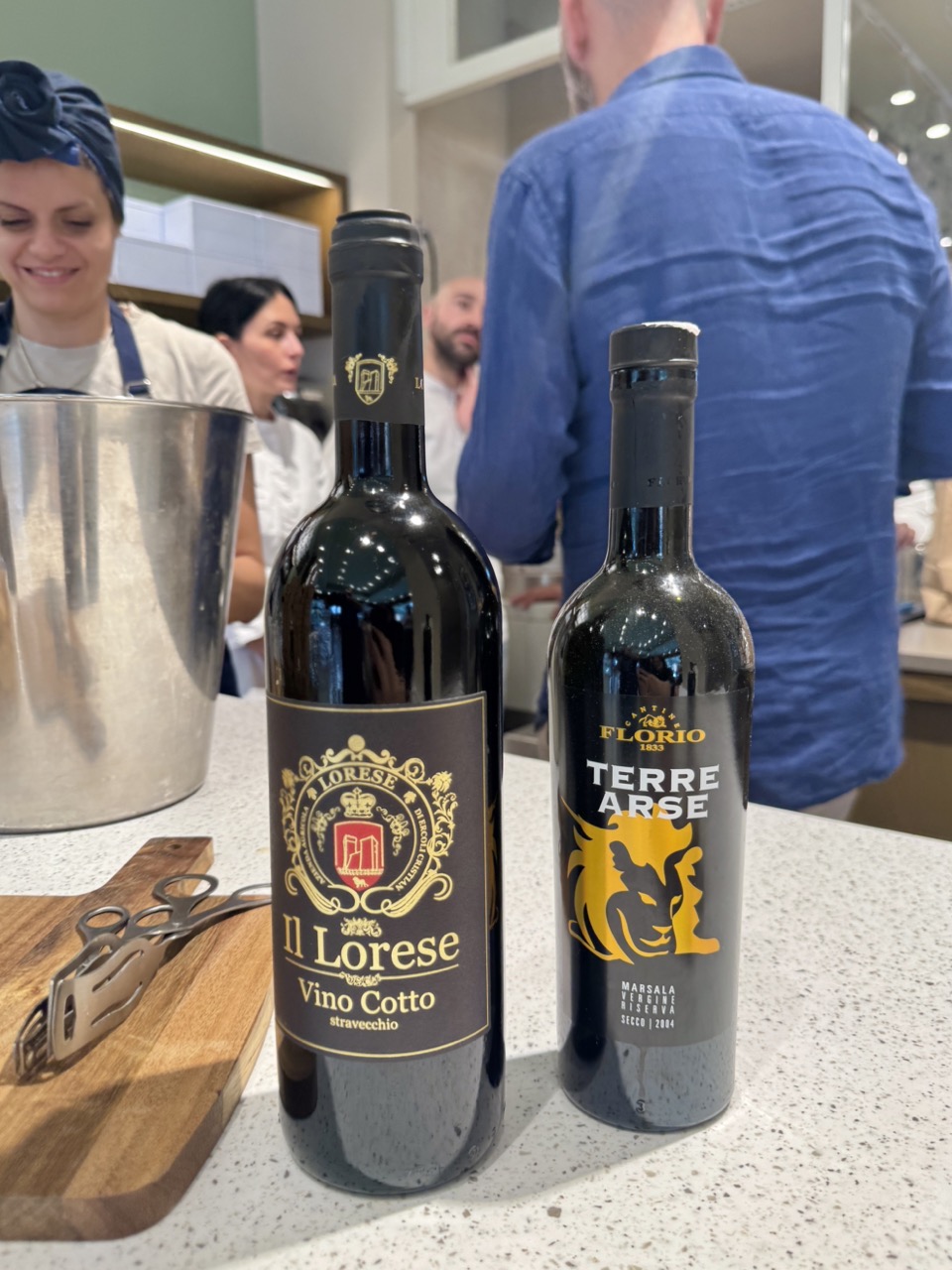
On this day, not only zabaione but also several other unique flavors were introduced. Each one was experimental, yet full of flavor more than just gelato, they were creative expressions of the ingredients themselves
A fior di latte (milk gelato) made with Nobile milk from the Lucano area let the pure taste of milk shine through.
A water-based pistachio gelato, made with pistachios from Stigliano, left out milk entirely, allowing the nut’s flavor to come through more clearly.
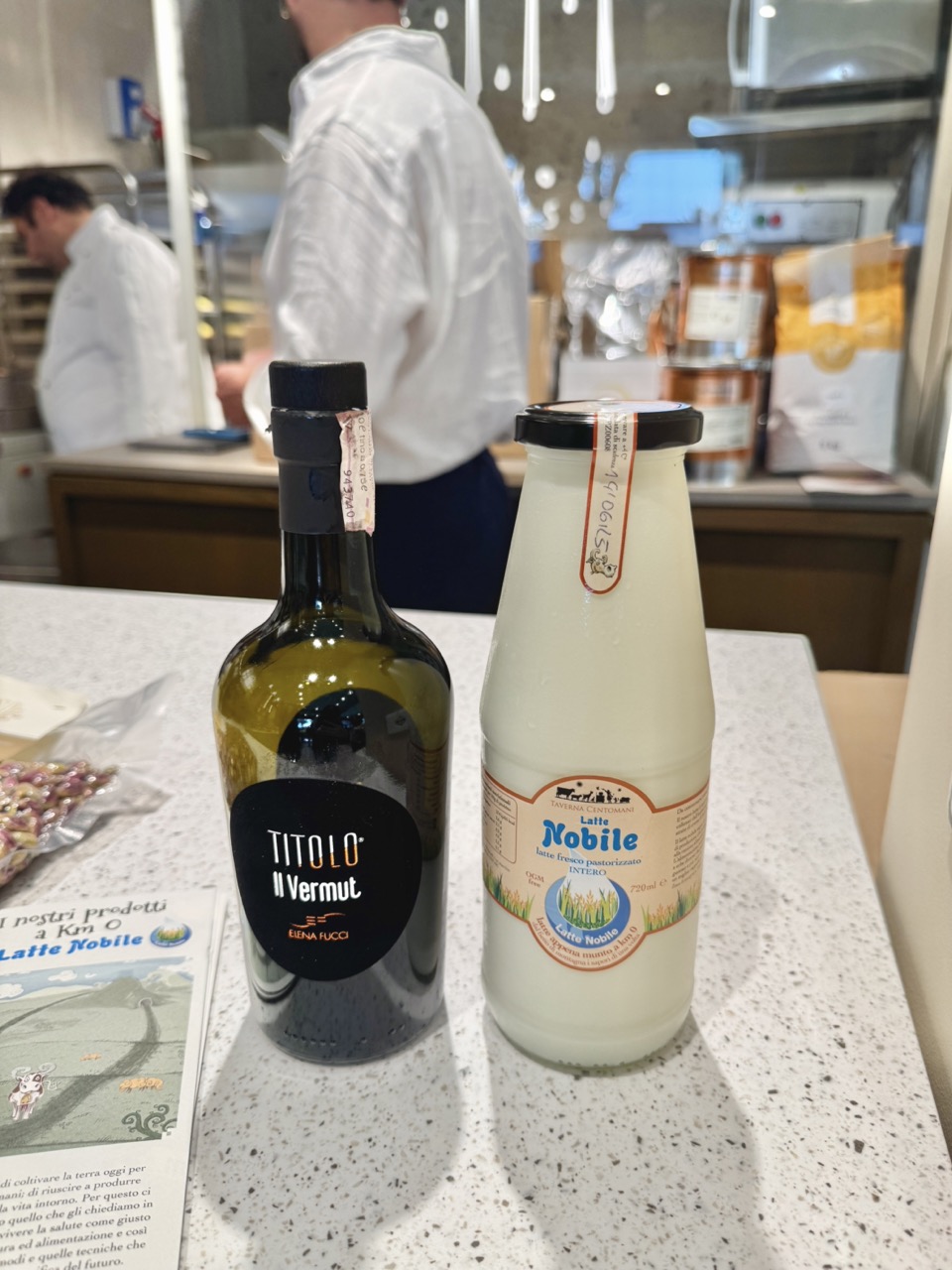
There was also a mascarpone gelato made with distilled mint water and candied mint leaves; a butter gelato infused with fried sage leaves; and a dulce de leche gelato scented with oregano. All of them featured unusual combinations, but the care taken with each ingredient was clear.
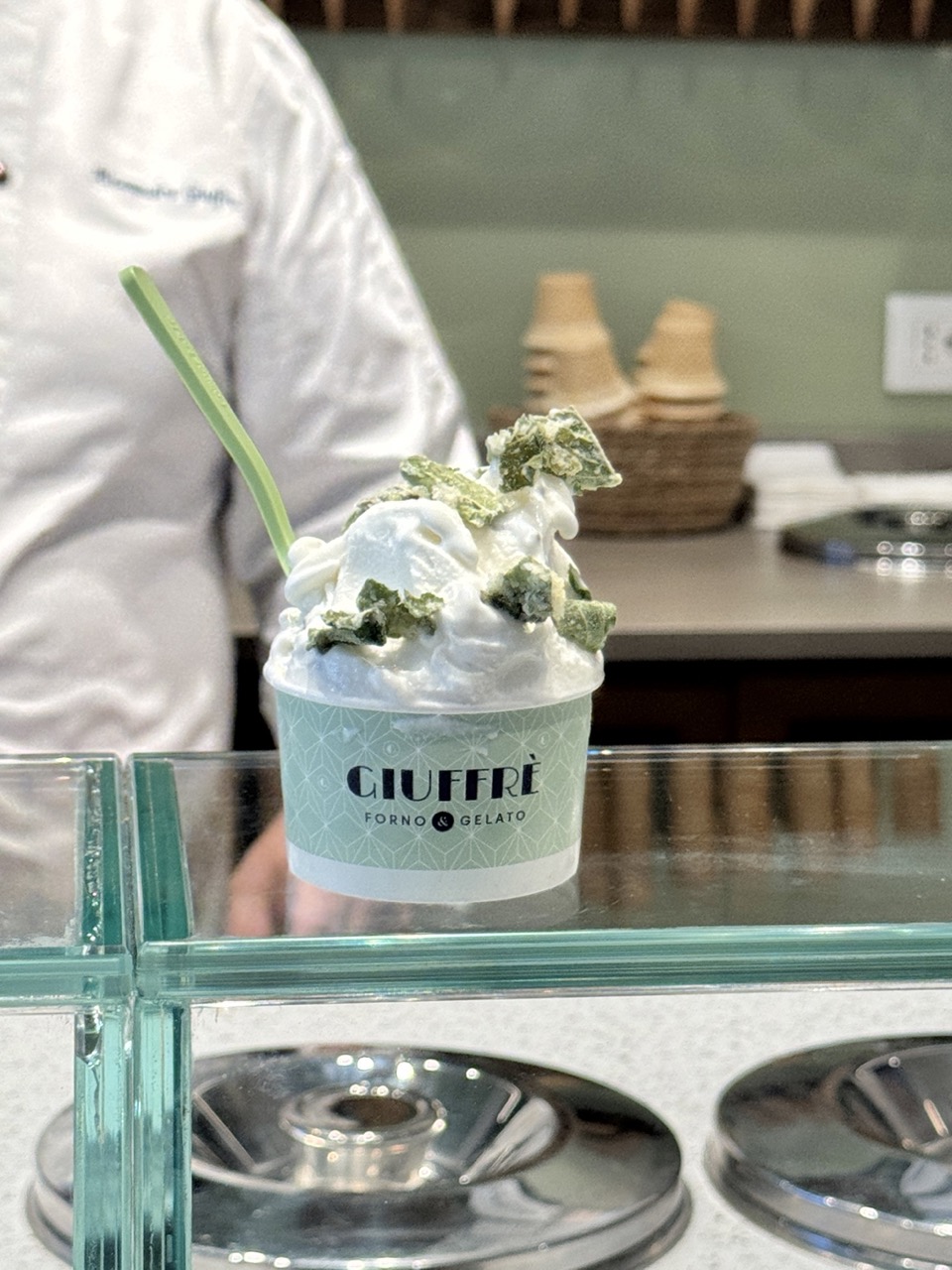
One of the most talked-about items at the event was the yogurt gelato.
Unlike the usual process, this yogurt wasn’t broken down or stirred. It was used in its naturally coagulated form. The result was a gentle flavor that preserved the character of the live cultures.
This yogurt is made by Andrea Cillo, a dairy artisan from Lactis – L’Alchimista del Latte, located in Sacrofano near Rome.
He uses raw milk and adds no thickeners, processing agents, or other additives. The yogurt is naturally fermented over time, in a process that is both sustainable and highly transparent.
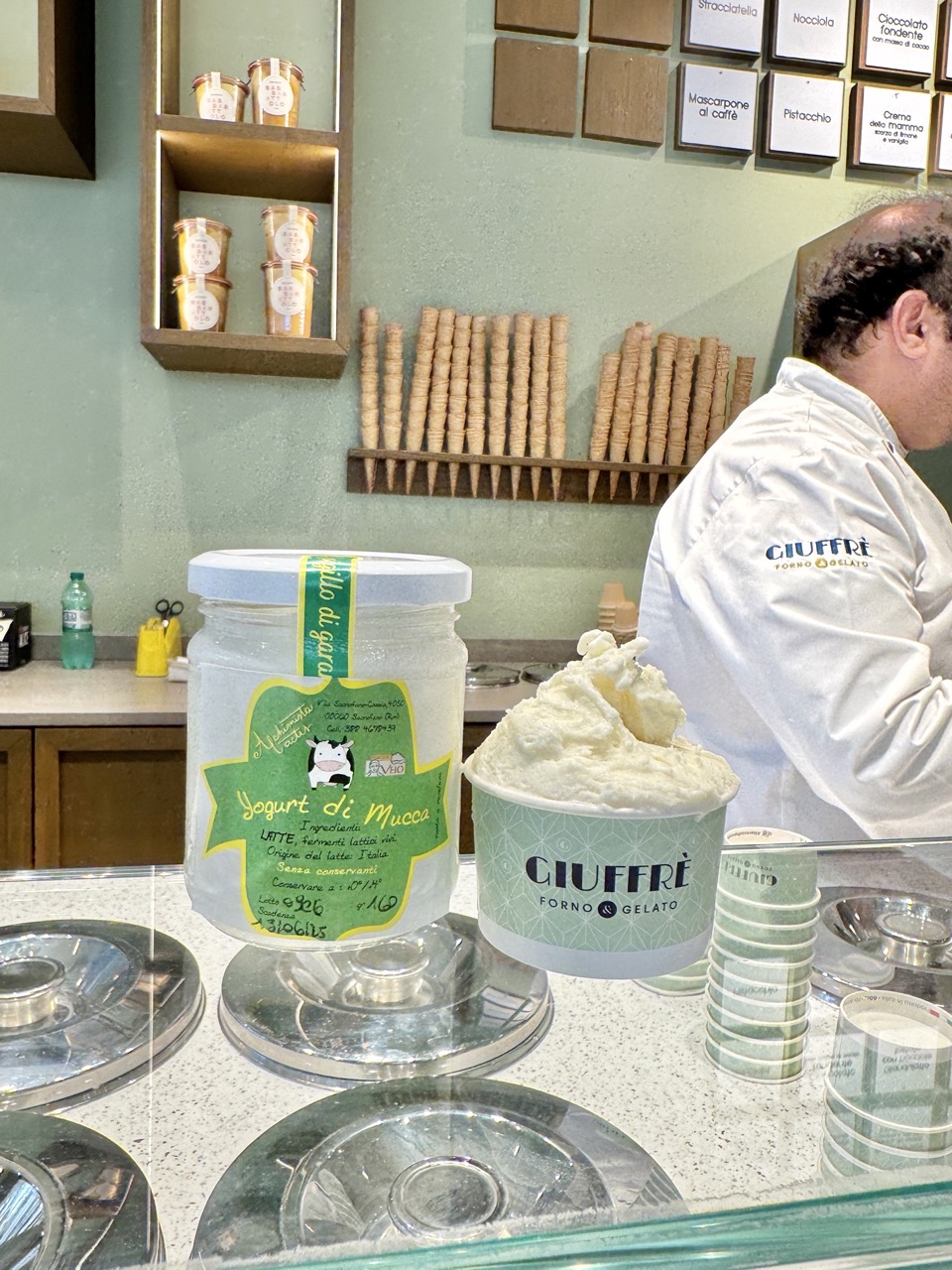
How ingredients are handled and how they are communicated was a key theme of the event.
Through gelato, the stories of each region, each person, and their relationship to food culture were carefully shared. Every flavor carried the clear intention and heart of its maker.
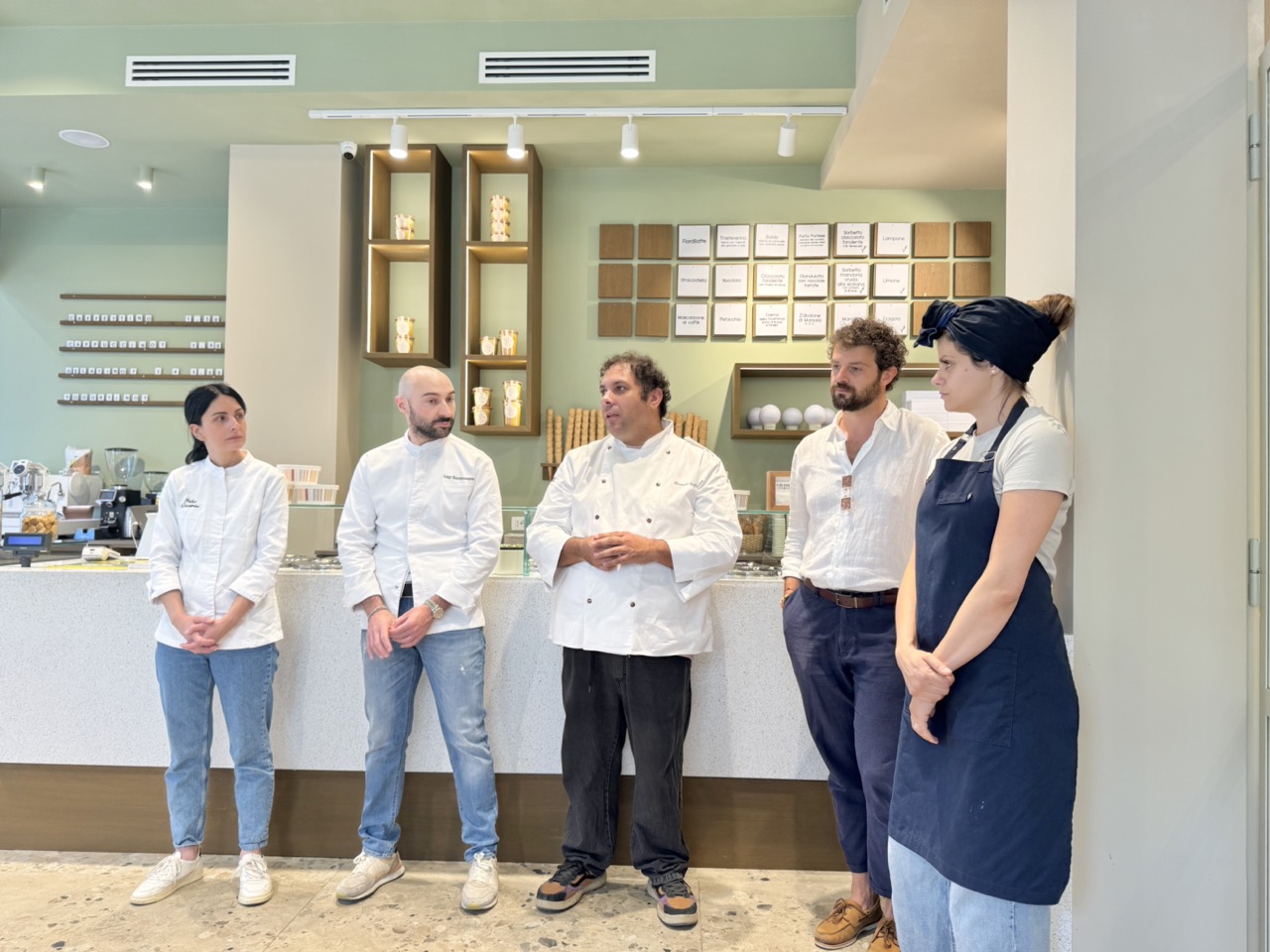

Erika Quattrini
Erika Quattrini, from the Marche region in central Italy, is a gelato artisan who values tradition while also embracing new ideas. She currently runs a shop called Gelateria Quattrini together with her family. The shop has a long history. It was originally opened in 1984 by her grandfather.
Erika originally graduated with the goal of becoming a business consultant, but she was eventually drawn into the world of gelato and decided to pursue it seriously. She trained at well-known schools in Italy, including Cast Alimenti and Hangar 78, where she built up her technical skills as a gelato maker.
As a result of her work, her shop received the highest rating of Tre Coni (Three Cones) from the Italian gourmet guide Gambero Rosso in both 2024 and 2025. In 2022, she also received awards such as “Rising Star Artisan” and the “Sorbet Innovation Special Prize,” solidifying her reputation in the gelato world.
At the heart of Erika’s gelato-making is her connection to small local producers. She carefully selects ingredients such as cheese from Cau & Spada and honey from Giorgio Poeta, showing a clear commitment to sourcing only trusted, high-quality products.
Her ideas are also unique in how they highlight the natural colors and aromas of ingredients. For example, she uses red beets to color panna cotta, spinach for green mint, and purple cabbage to tint white chocolate. One of her signature techniques is extracting plant aromas using homemade hydrosols (called idrolati in Italian), a delicate and thoughtful method.
Erika’s gelato also has a playful side. One flavor is humorously named “Cavoli che cioccolato!” (“Cabbage and Chocolate!?”), while another sorbet looks white but tastes like orange surprising people with the contrast between appearance and flavor.
A seasonal favorite features pecorino cheese from the Monti Sibillini area paired with a pumpkin seed cream.
All of her flavors are gluten-free, and more than half are dairy-free. Her approach reflects a clear sense of care, aiming to make gelato that anyone can enjoy with peace of mind.
Looking ahead, she plans to strengthen the lab functions of her shop so that she can focus more on both production and customer interaction creating a space that’s even more connected to the local community.
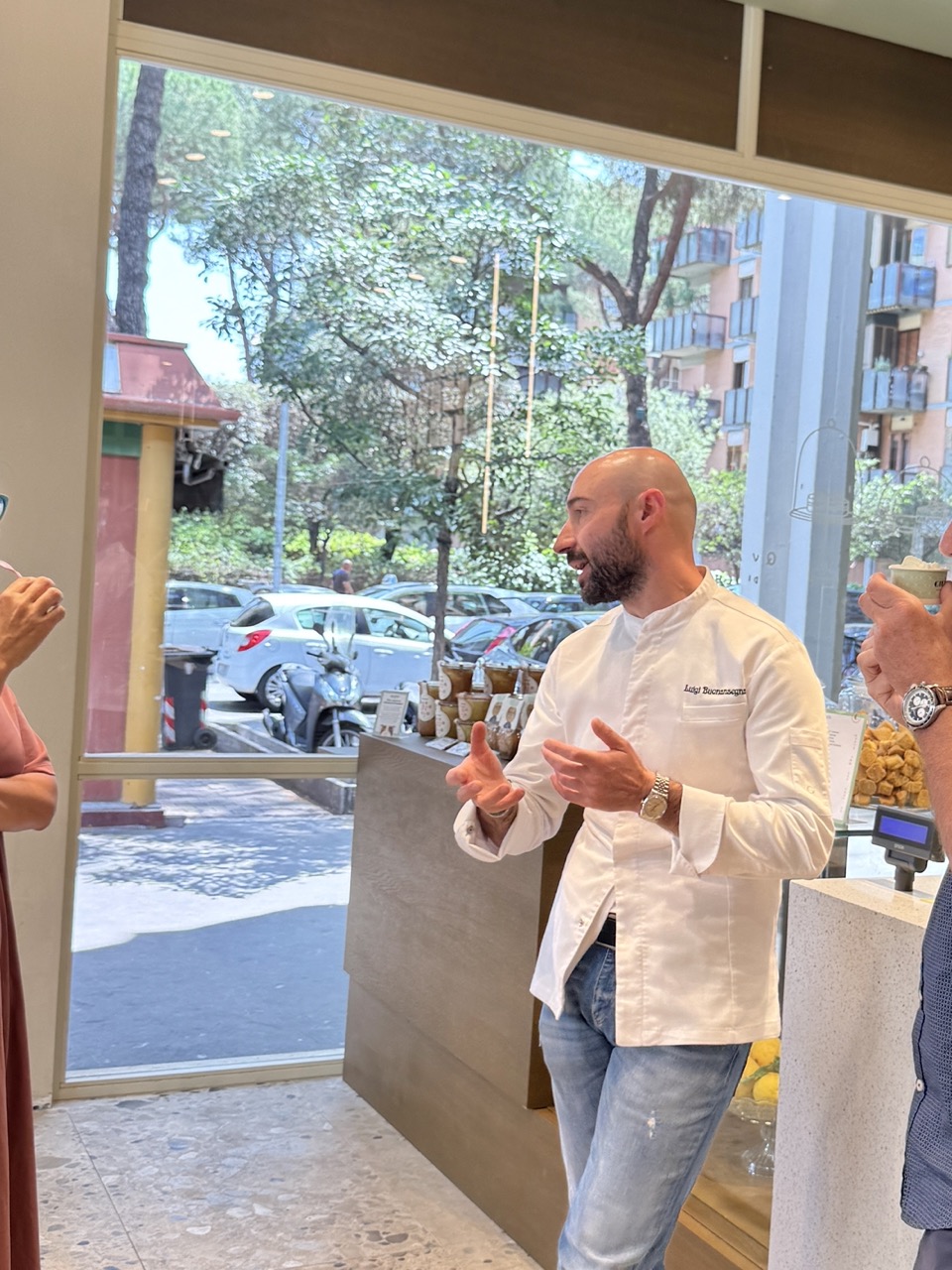
Luigi Buonansegna
Luigi Buonansegna creates one-of-a-kind gelato in the small town of Pignola, located in the southern Italian region of Basilicata. His path is somewhat unusual, he originally studied law at a university in Florence and worked in the court system. But after meeting a local gelato artisan, he gradually found himself drawn to the world of food.
He later took over and built on his family’s café, and in 2020, he opened his own shop in Pignola called Officine del Gusto. Since then, he has devoted himself to expressing local food culture and ingredients through gelato.
What defines Luigi’s approach is his deep commitment to local ingredients. He uses pistachios from Stigliano, a variety of apricot called Cafonna, strawberries from Pignola and of the Candonga variety, as well as Nobile milk and saffron from Basilicata. He avoids industrial bases and additives, and when he does use stabilizers, he opts for natural ones. His focus is on letting the ingredients speak for themselves through careful, thoughtful preparation.
His flavor combinations are also highly original. For example, he pairs lime with basil, white chocolate with sesame, and makes salted caramel using rock salt from Trapani. One standout is Oro Lucano, a flavor made with saffron-infused white chocolate combined with apricots from Rotondella and pistachios. This flavor won the Procopio Cutò gold award at the 2020 Sherbet Festival and has received widespread acclaim.
His talent hasn’t gone unnoticed. In 2021, Gambero Rosso, Italy’s leading gourmet guide, named his chocolate gelato the best in Italy. From 2021 to 2025, he earned the top rating of Tre Coni (Three Cones) four years in a row making him the first gelato artisan from Basilicata to do so. These honors reflect the quality and dedication behind his work.
For Buonansegna, the goal isn’t just running a successful shop. His clear vision is to use gelato as a way to tell the story of Basilicata, its flavors, its culture, its identity. Each gelato he makes offers more than just deliciousness; it delivers a sense of place and a deeper experience rooted in his homeland.
Giuffrè Forno & Gelato

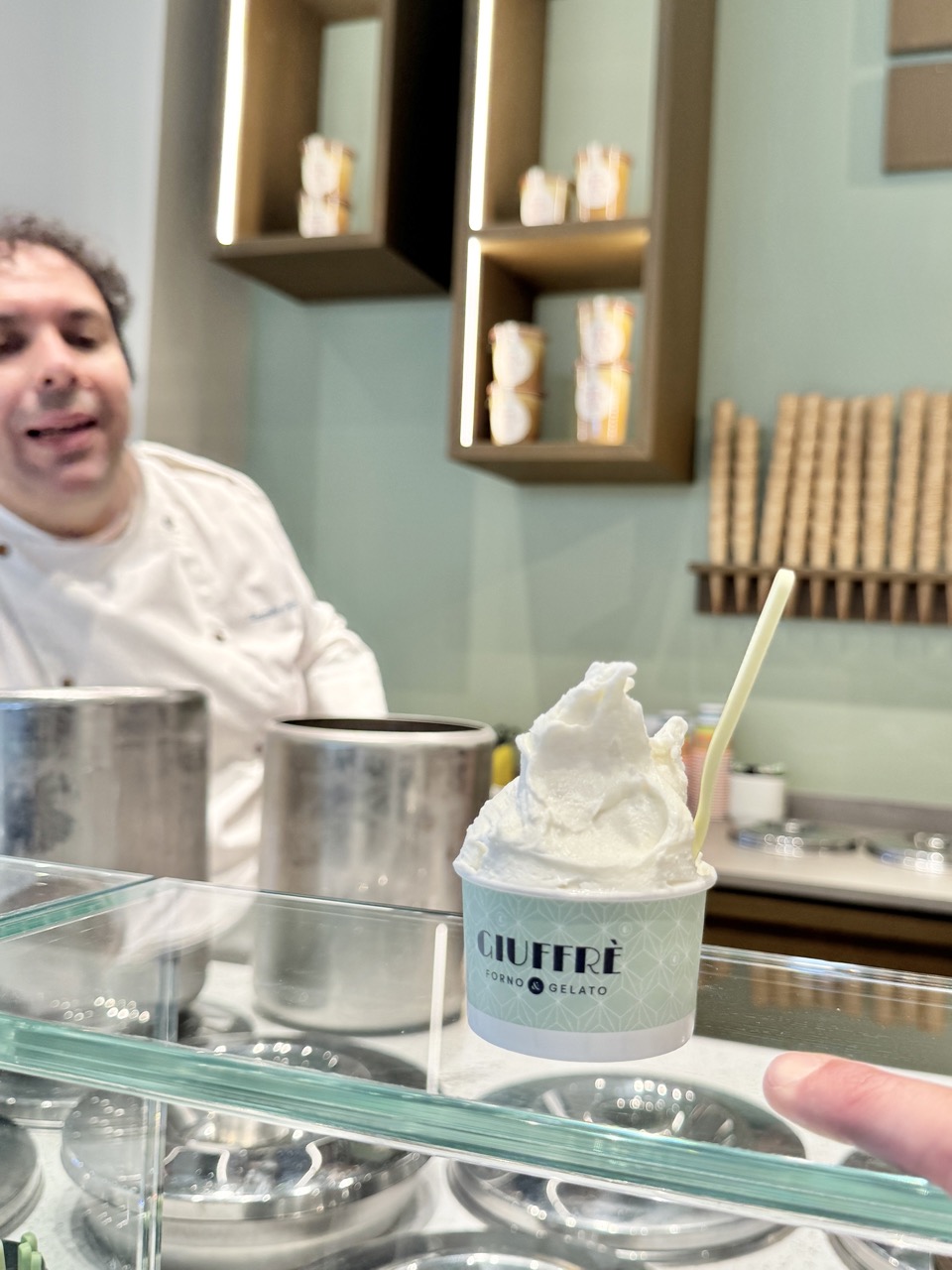

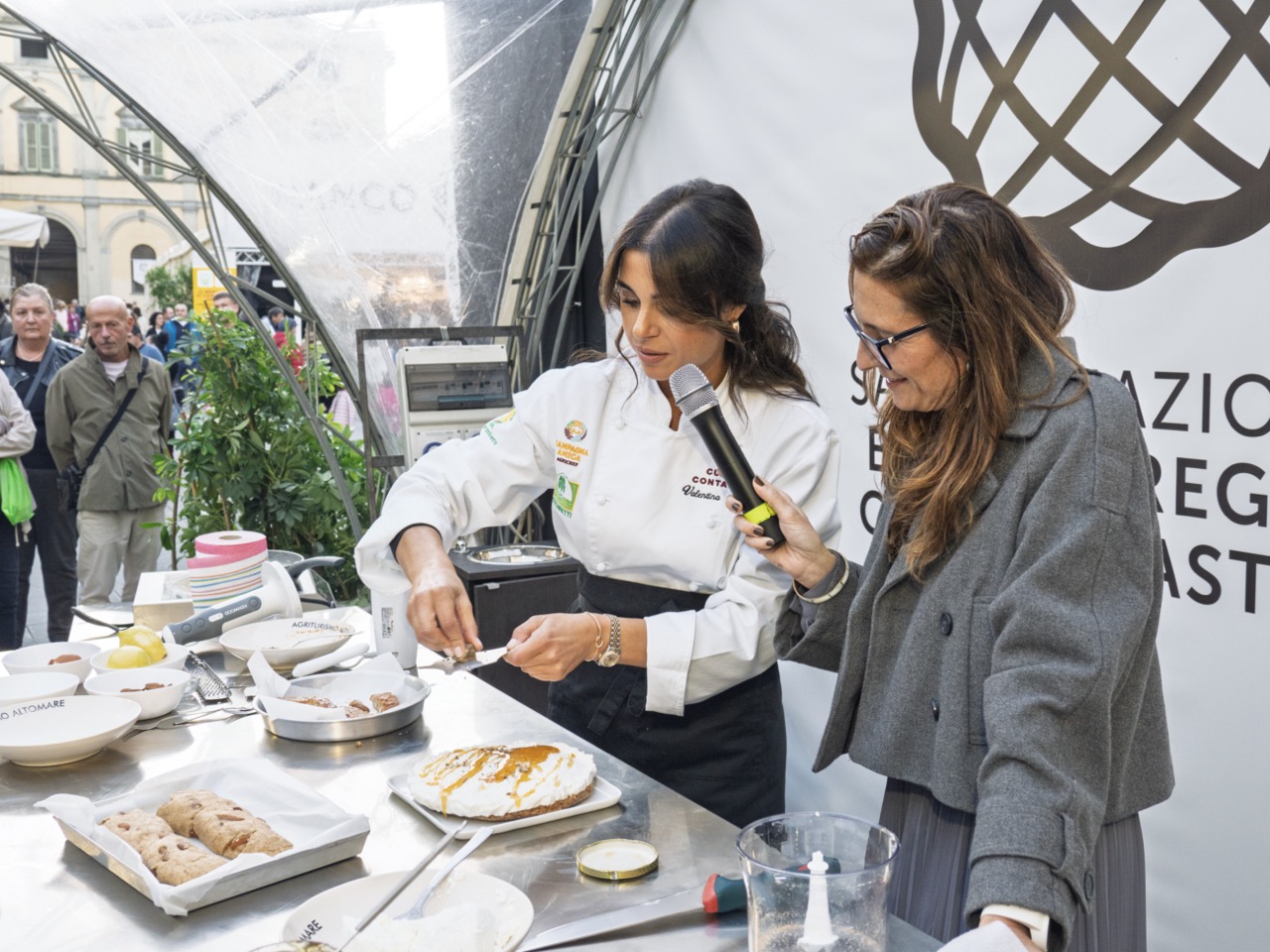






square.jpg)

